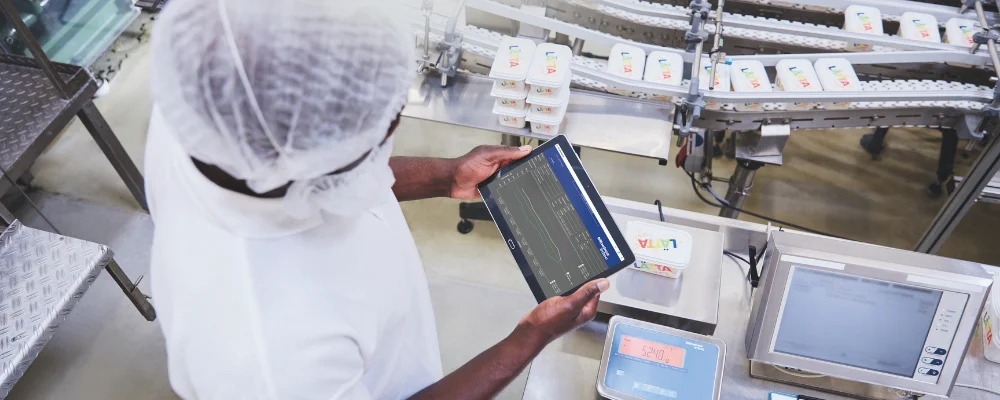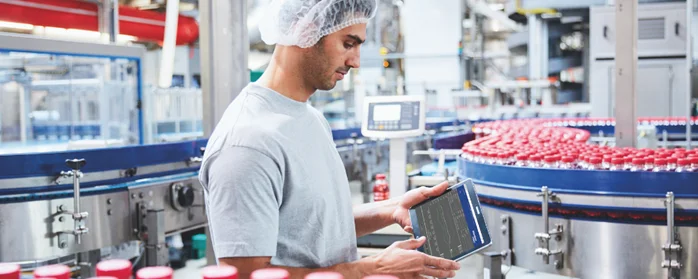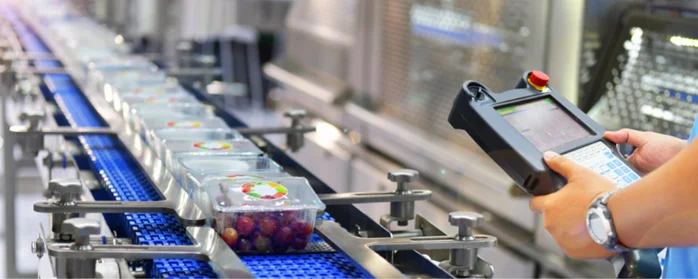Expert opinions: The cost of human error and the role of weighing processes and technology
From misreading of results, recording results incorrectly, to a momentary lapse of attention, human error in manufacturing is so widespread that it is the cause of 80% of failures and defects1, 23% of unplanned downtime2 and can account for almost 11% of product wastage3. We asked our team of regional weighing experts to highlight the impact of human error and how processes and technology can help to mitigate risks.
There are many sources of human error, but what types of mistakes are common in weighing processes?
“One of the most common sources of human error is the manual recording of data, such as the operator writing down a wrong number, using an incorrect unit of measurement, or missing a decimal point. This is particularly costly in highly-regulated industries where the consequence of not recording data correctly and accurately can result in numerous rejections at quality control, audit failures due to lack of traceability and errors in packing processes”, says Steve Clements, Regional Sales Manager (South East).
“Errors can also occur during the manual mixing of ingredients, for example, an operator in a food factory may weigh and add flour instead of sugar to the recipe. Risk is also present when operators weigh manually under time restrictions, which could result in over or under weighing. Such instances can be very costly leading to product wastage, production lines being halted, non-compliance in audits and batch recalls. This can lead to loss of confidence in a manufacturer’s brand as well as financial implications”, explains Andrew Simpson, Regional Sales Manager (North East & Scotland).
When these issues are identified, what are the best ways of tackling them?
“A good starting point is to investigate each human error, understand the cause of the issue and ask why the error occurred. For instance, was the error due to lack of operator training, absence of processes or can procedures be simplified or improved with software or hardware changes? Once the source of these issues has been pinpointed, remedial actions can be put into place. This can include new weighing solutions to improve procedures and safeguard against future errors”, explains Stephen Richardson, Regional Sales Manager (North West).
What types of weighing technology can help to reduce human errors?
“Software such as the AWM Baykon Formulation Solution can help to alleviate many human errors cross-industry. With features such as controlled formula weighing, component validation, weight recording, and a check-weighing function to indicate each weight measurement is within set tolerances, the software alerts the operator to potential issues before they occur. As an added benefit, the software is fully customisable and can potentially be integrated with your current weighing equipment to provide a full turnkey weighing system.” says Sam Cartwright, Regional Sales Manager (South West & Wales).
Sam adds, “There are a multitude of other solutions to help alleviate the risk of human error, as outlined here.”
With so many technology options on the market, what factors should be considered to find the best-fit solution?
“It can be useful to use a checklist to help you decide on the most appropriate solution for your requirements”, recommends Stephen.
Checklist of considerations:
- The problem: Identify the types of human error that you are experiencing, or may experience, and pinpoint solutions with features to mitigate these.
- Your environment: Next, consider your weighing environment. For instance, sterile and hazardous environments may require equipment with specific ingress protection (IP) ratings to protect against water and dust. For locations that are prone to instability, including vibrations and temperature extremities, additional environmental control measures may be required including anti-vibration tables, such as the Sartorius YWT03 balance table and equipment with built-in drafts shields, for example, the Sartorius Cubis® II.
- Your operators: Consider the ease of use and any training that may be required to use the weighing equipment.
- Accuracy and compliance: Make sure your choice of weighing equipment offers the right resolution for the required degree of accuracy and meets the industry/ trading regulations where these apply.
- Speed of measurement: Where your operators are constrained by time and speed is of the essence, consider equipment with the fastest rates of stability. The OHAUS Valor 2000, has less than a one-second stabilisation time and front and rear LED displays, allowing multiple operators to efficiently utilise one scale for the same job.
- Future-proofing with integrations: Where possible, ensure your choice of weighing equipment is compatible with immediate and longer-term business requirements to get the most out of your investment. For example, you may want to add USB recording or printing options for added flexibility.
Choose the right equipment every time
The right weighing equipment can safeguard against the risk of human error, but the wrong solutions can hinder your efforts and lead to costly consequences. While the checklist of considerations helps to point you in the right direction, it is always a good idea to consult with a specialist weighing expert who understands your needs and can help you to navigate through the countless options and match you to the best-fit solution.
At Northern Balance, we have over 150 years’ collective weighing expertise and offer no-obligation, impartial advice on hundreds of makes and models of weighing equipment for laboratory and industrial environments. With the availability of financial support such as the super-deduction tax relief and up to 20% off our range of weighing equipment, now is the ideal time to contact our regional weighing experts who will work with you to comprehensively review your needs and provide bespoke solutions that meet your budget and exacting requirements.
Sources:
1 Learnaboutgmp (2015) ‘The Top 7: How To Reduce Manufacturing Human Error’ [Online] Available at https://learnaboutgmp.com/good-manufacturing-practices-cgmp/the-top-7-how-to-reduce-manufacturing-human-error/ (Accessed 9th April 2021), paragraph 1.
2 Wright, I (2017) ‘Human Error is Worse in Manufacturing Compared to Other Sectors’ [Online] Available at: https://www.engineering.com/story/human-error-is-worse-in-manufacturing-compared-to-other-sectors (Accessed 13th April 2021), paragraph 3.
3 Pilgrim, T (2019) ‘Human error major driver of food waste’ [Online] Available at: https://phys.org/news/2019-01-human-error-major-driver-food.html (Accessed 12th April 2021), paragraph 3.





